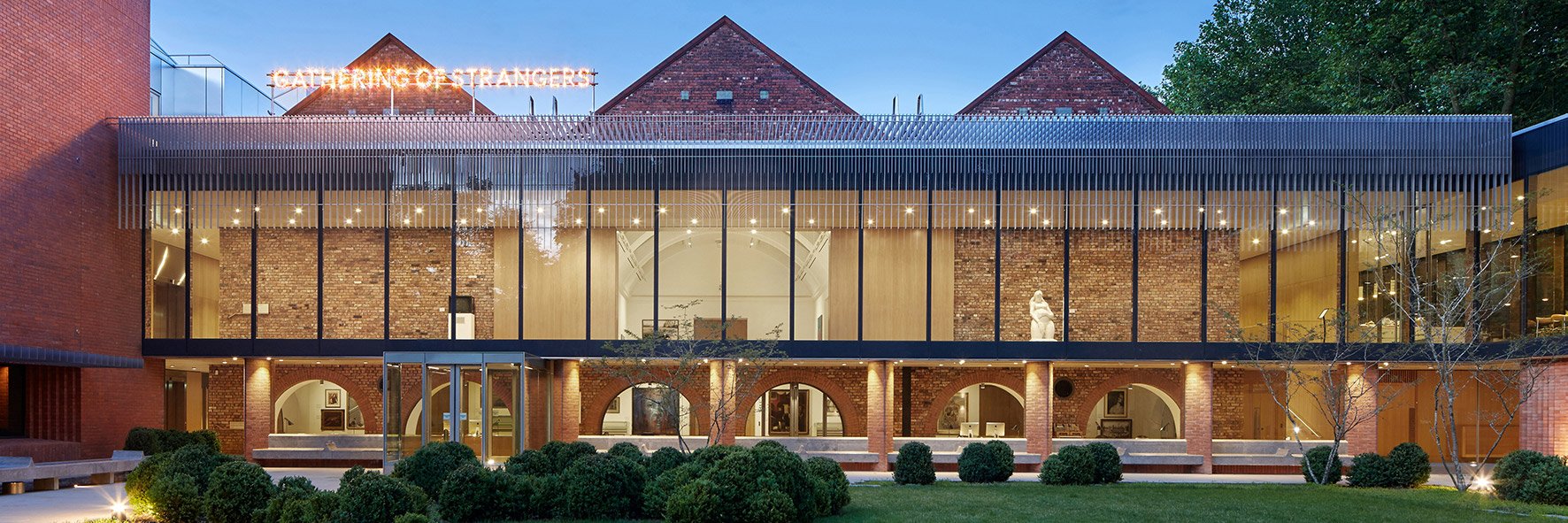The best gallery expansions of recent years
Raphael Roy Taylor
As the Art Fund and National Lottery pivot away from larger-scale capital projects towards supporting a greater number of small ventures, 2025 is the perfect time to take stock of the best this period of significant capital investment. From extensions and refurbishments that have redefined existing venues to wholesale new institutions, here’s some of the best over the last 25 years.
Aberdeen Art Gallery
Aberdeen’s elegant gallery reopened after a £34.6m development, designed by Hoskins Architects. It wasn’t simply a refresh of existing spaces but instead a reimagining of the gallery entirely. This begins with the copper-clad roof extension, creating three new temporary exhibition galleries, and a stunning rooftop cafe. What this addition really changes, however, is the feeling of the spaces below it. The Sculpture Court, the central atrium of the Gallery once featured a circular frosted glass roof light, which has been cut away to form another balcony. As the eyes rise up the structure, classical columns transform into a modern and sleek glass latticed roof light, a story above its original placement. This has enabled an opening up of the public spaces, with the number of permanent galleries increased from 11 to 19, allowing for the number of works on display to triple from 350 to almost 1000. Aberdeen is now a true cultural destination.
The Whitworth, Manchester
Manchester’s premier space for international contemporary exhibitions had, prior to extension, an almost institutional feel. The imposing, red brick 1890 building looked more like a hospital or a school than an inviting centre for modern art. The £15 million remodelling by MUMA finally stripped the Whitworth of this feeling. Two extending glass promenades connect the gallery with Whitworth Park where previously imposing, blank brick walls stood, enabling the addition of a new sculpture park. This allows for not only new dynamic exhibition spaces but also a far more welcoming side to the gallery, compared to its original entrance. The Whitworth as truly become the Tate of the North.
Firstsite, Colchester
Colchester’s art gallery’s huge curving shape resembles a copper shard, sprawled across historic surroundings. It sits above a Roman mosaic, which a glass floor reveals as the visitor enters. In addition to its three gallery spaces dedicated to temporary contemporary art, the venue hosts a cinema and cafe. It marks a huge step forward for Colchester and the East of England which didn’t have a dedicated contemporary art space until Firstsite’s construction. Its curved walls are unique in the country, transforming exhibitions into remarkable experiences and bringing truly world-class exhibition space into the previously barren region run the world of contemporary art.
MIMA, Middlesbrough
Middlesbrough’s arts scene was previously broken up between three venues that were simply inadequate in displaying the town’s impressive collection of over 2,500 works. The new Middlesbrough Institute of Modern Art opened in 2007, costing £14.2 million. The triple-height atrium draws the eyes up towards metallic shards that pierce the ceiling, over 10 metres above your head. The staircase, constructed from slabs of limestone and straddled by a pair of exaggerated wooden handrails. It rises towards the second-floor galleries, over 4,000 square feet of light, airy and configurable space. The third floor roof terrace delivers flexible event space plus a roof terrace, provide views over the new public realm the gallery’s construction ushered in.
BALTIC Centre for Contemporary Art, Gateshead
Originally a flour silo, the Baltic building had fallen out of use by the time of industrial depression in the early 1980s. Ellis Williams led the £50m redevelopment of the silo into one of the world’s largest centres for contemporary art, a project that involved the near-complete gutting of the structure and the installation of six suspended floors and three mezzanines, creating over 3000 square feet of display space. The cavernous nature of the spaces allowed for some incredible installations, such as the 2011 Turner Prize, and Daniel Buren’s. transformation of the entire glazed facade into an artwork composed of twenty diamonds. Without a permanent collection, BALTIC has become the largest space in the UK entirely dedicated to temporary exhibition.





